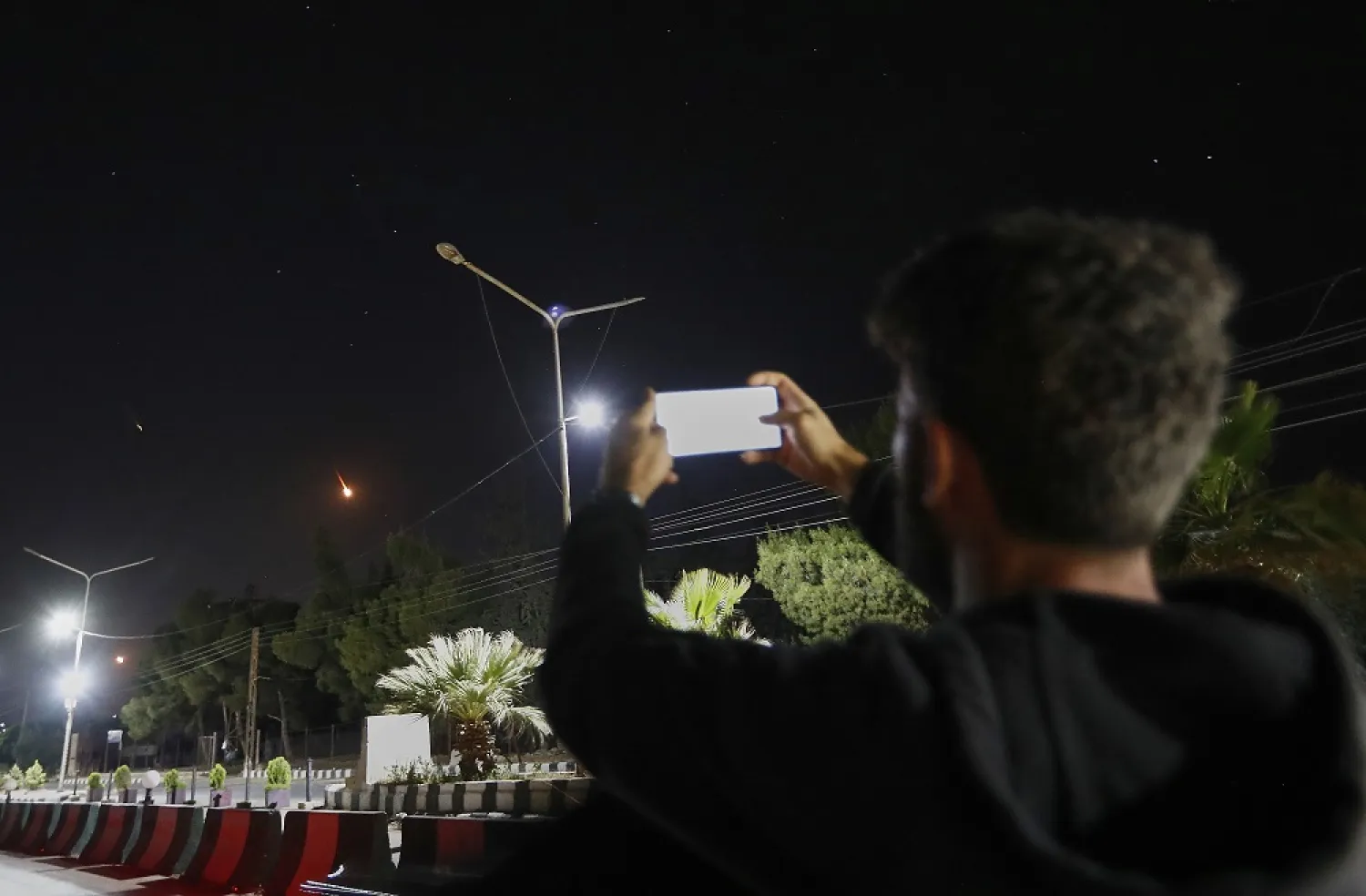In a park overlooking Damascus, 25-year-old Khaldoun Hallak has spent the past few evenings with his friends, drinking yerba mate, snacking on nuts, smoking hookah pipes and watching the sky for missiles streaking overhead.
“We’ve been through 14 years of war, and this is the first time Syria has nothing to do with it and we’re just spectators,” Hallak said.
Since Israel launched a barrage of strikes on Iran last week and Iran retaliated with missile and drone attacks against Israel, neighboring countries have been in the flight path.
Outside the scope
Downed missiles and drones have fallen in Syria, Lebanon and Iraq, damaging houses, causing fires and reportedly killing one woman in Syria. But those countries have so far not been dragged directly into the conflict, which had killed at least 224 people in Iran and 24 in Israel as of Tuesday, and many in their war-weary populations are hoping it stays that way.
In Lebanon, which is still reeling from last year’s war between Israel and the Hezbollah party, videos making the rounds on social media have shown revelers dancing on rooftops while projectiles flash across the sky in the background.
Firas Maksad, managing director for the Middle East and North Africa at the Eurasia Group, a New York-based risk consultancy organization, happened to be visiting Lebanon when the conflict broke out and was attending a wedding when a parade of missiles began lighting up the sky as the DJ played ABBA’s disco hit “Gimme! Gimme! Gimme! (A Man After Midnight)”. He posted a video of the scene that went viral.
“Certainly most in Lebanon and also Syria are very satisfied to be outside the scope of this,” Maksad said.
No longer in the spotlight, a sense of relief
For some in the region, there is also measure of schadenfreude in watching the two sides exchange blows.
There’s a Syrian expression that literally translates as, “The fang of a dog in the hide of a pig.” It means that two people perceived as despicable are fighting with each other. The phrase has surfaced frequently on social media as Syrians express their feelings about the Israel-Iran conflict.
Watching from a park
Many Syrians resented Iran’s heavy-handed intervention in support of former President Bashar al-Assad during the country’s civil war, but are also angered by Israel’s incursions and airstrikes in Syria since Assad’s fall. The Syrian population also widely sympathizes with the Palestinians, particularly with civilians killed and displaced by the ongoing war in Gaza.
“May God set the oppressors against each other,” said Ahmad al-Hussein, 18, in Damascus, who was sitting in a park with friends waiting to see missiles pass overhead Monday night. “I hope it continues. We’ve been harmed by both of them.”
Hallak echoed the sentiment.
“Every time we see a missile going up, we say, may God pour gasoline on this conflict,” he said. “If one side is hit, we will be happy, and if the other side is hit, we will also be happy. We will only be upset if there is a reconciliation between them.”
In Lebanon, where last year’s Israel-Hezbollah war killed more than 4,000 people, including hundreds of civilians, and left destruction in wide swathes of the country’s south and east and in Beirut’s southern suburbs, some see retribution in the footage of destroyed buildings in Tel Aviv.
Hezbollah remains largely quiet
A US-brokered ceasefire deal brought an end to the latest Israel-Hezbollah war in November. The group, which lost much of its senior leadership and arsenal in the conflict, has remained largely quiet since then and has given no indication that it intends to join the fray between Israel and Iran.
Israeli forces have continued to occupy several border points in southern Lebanon and to carry out regular airstrikes on what Israel says are Hezbollah facilities since the ceasefire.
“Of course I am against the Israeli occupation, and Iran is an Islamic country standing up to it,” said Hussein al-Walid, 34, a welder in the southern coastal city of Sidon.
Iran's axis
Despite the dramatic scenes of buildings reduced to rubble in Israel, Tehran and other Iranian cities have taken a worse pounding and other regional countries, including Lebanon, could still be pulled into the conflict.
Caroline Rose, a director at the Washington-based New Lines Institute think tank said that while it seems “clear that Iran-backed proxies across the region, particularly Hezbollah, just do not have the capacity” to enter the fray, Israel could decide to expand the scope of its offensive beyond Iran.
One of the goals announced by Israeli Prime Minister Benjamin Netanyahu was to eliminate Iran’s “axis of terrorism” - the coalition of Tehran-backed armed groups across the region known as the “Axis of Resistance.”
That goal “is ambiguous and offers Israel the operational space to expand this war to countries it deems are hosting Iran-backed proxies, no matter how weak they may be,” Rose said.
Al-Walid shrugged off the possibility of a new war in Lebanon.
“The war is already present in Lebanon,” he said. “Israel isn’t abiding by the agreement and is striking every day.”
Hassan Shreif, a 26-year-old student from the city of Baalbek in eastern Lebanon, where Hezbollah has a strong base of support, said that after last year’s war in Lebanon and the heavy losses suffered by the group, many of its supporters “were clearly anguished and didn’t feel vindicated.”
“So, anything, even a window breaking in Tel Aviv, is (now) a victory for them,” he said. Every time Iranian missiles pass overhead, he said, people in the area break out in shouts of jubilation.
At the same time, Shreif said, “there’s always a silent group hugging the wall as we say in Arabic, treading carefully and praying we stay out of it.”









